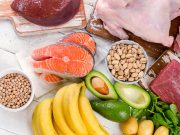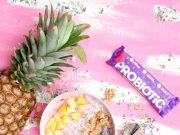Embarking on a journey to create a high-protein diet as a vegetarian can often feel like navigating a complex puzzle, where finding the right pieces is essential for achieving optimal health and well-being. Whether you’re a lifelong vegetarian or new to this lifestyle, ensuring you receive adequate protein can be a common concern. In a world where protein is often synonymous with meat, it’s easy to feel overwhelmed or uncertain about how to meet your dietary needs without compromising your values. This guide is here to help. With empathy and practical advice, we’ll explore a variety of plant-based protein sources, meal planning strategies, and nutritional tips tailored specifically for vegetarians. Our goal is to empower you to create a balanced, satisfying, and nutritious high-protein diet that supports your health goals and aligns with your ethical choices. Let’s dive in and discover how you can nourish your body with confidence and creativity.
Understanding Your Protein Needs as a Vegetarian
Determining your protein needs as a vegetarian involves understanding both your dietary preferences and your body’s requirements. Protein is essential for muscle repair, immune function, and overall health. While plant-based diets can easily meet protein needs, it’s important to be mindful of your choices. The Recommended Dietary Allowance (RDA) suggests an intake of approximately 0.8 grams of protein per kilogram of body weight, but this can vary based on factors such as age, activity level, and health goals.
To ensure you’re meeting your protein needs, consider incorporating a variety of protein-rich foods into your meals. Here are some key plant-based protein sources you can include:
- Legumes: Lentils, chickpeas, and beans are excellent sources of protein and fiber.
- Nuts and Seeds: Almonds, chia seeds, and hemp seeds offer a convenient protein boost.
- Whole Grains: Quinoa, farro, and brown rice are not only high in protein but also provide essential nutrients.
- Dairy or Dairy Alternatives: Greek yogurt, cottage cheese, or fortified plant-based milks can enhance your protein intake.
- Tofu and Tempeh: These soy products are versatile and can be used in a variety of dishes.
When planning your meals, aim to combine different protein sources to ensure you receive a complete amino acid profile. For instance, pairing beans with rice or hummus with whole-grain pita can create a balanced meal. Listening to your body and adjusting your intake as needed will help you maintain energy levels and support your lifestyle. Remember, a varied and balanced diet is key to thriving as a vegetarian.
Incorporating Plant-Based Protein Sources into Your Meals
Transitioning to a high-protein vegetarian diet can be a delightful culinary adventure. Plant-based proteins are not only abundant but also diverse, offering a variety of flavors and textures. To seamlessly incorporate these protein sources into your meals, consider these practical tips:
- Legumes and Lentils: A cornerstone of vegetarian protein, legumes and lentils can be transformed into hearty soups, stews, or even a delightful base for veggie burgers. Experiment with different varieties like chickpeas, black beans, and lentils to keep your palate excited.
- Nuts and Seeds: Packed with protein and healthy fats, nuts and seeds like almonds, chia seeds, and hemp seeds can easily be added to smoothies, salads, or homemade granola bars. Their crunchy texture adds a satisfying element to any dish.
- Whole Grains: Quinoa, farro, and buckwheat are excellent sources of protein that can complement any meal. Use them as a base for a nourishing grain bowl, or mix them into salads for an extra protein punch.
It’s essential to keep your meals balanced and enjoyable. Try blending different protein sources in one meal, such as a quinoa salad topped with roasted chickpeas and a sprinkle of sunflower seeds. This not only boosts the protein content but also ensures a spectrum of nutrients, making your meals as nutritious as they are delicious.
Crafting a Balanced High-Protein Vegetarian Meal Plan
Designing a meal plan that is both vegetarian and high in protein may seem challenging, but with a bit of creativity, it can be both nutritious and delicious. The key is to focus on a variety of protein-rich plant foods that will provide all the essential amino acids your body needs. By combining different sources of protein, you can ensure a well-rounded and satisfying diet.
Start by incorporating a diverse array of legumes, such as lentils, chickpeas, and black beans. These are not only high in protein but also rich in fiber and essential nutrients. Pair them with whole grains like quinoa, brown rice, and farro to create a complete protein profile. Consider including nuts and seeds, such as almonds, chia seeds, and hemp seeds, which add a crunchy texture and healthy fats.
- Explore soy-based products like tofu and tempeh, which are versatile and can be used in a variety of dishes.
- Don’t forget about dairy and dairy alternatives, such as Greek yogurt, cottage cheese, and fortified plant-based milks, which can boost your protein intake.
- Incorporate a variety of vegetables like spinach, broccoli, and peas, which offer not only protein but also a wealth of vitamins and minerals.
Experiment with different combinations to keep your meals exciting and flavorful. By balancing these ingredients thoughtfully, you can craft a meal plan that supports your dietary needs while embracing the benefits of a vegetarian lifestyle.
Navigating Common Challenges in a Vegetarian High-Protein Diet
Embracing a vegetarian lifestyle while ensuring adequate protein intake can sometimes feel like walking a tightrope. It’s a journey that involves not only finding protein-rich foods but also balancing nutrients for overall health. One of the most common challenges is the misconception that vegetarian diets lack variety. This can lead to monotonous meals and potential nutrient deficiencies. To counter this, consider incorporating a diverse range of protein sources into your diet, such as:
- Legumes: Lentils, chickpeas, and black beans are versatile and packed with protein.
- Whole grains: Quinoa and farro are not only high in protein but also provide essential amino acids.
- Nuts and seeds: Almonds, chia seeds, and hemp seeds offer a crunchy texture and a protein punch.
- Dairy and eggs: If your diet allows, yogurt, cheese, and eggs can significantly boost your protein intake.
Another challenge often faced is the fear of missing out on essential amino acids, which are crucial for muscle repair and growth. Unlike animal proteins, most plant-based proteins are not complete, meaning they do not contain all nine essential amino acids. To overcome this, focus on complementary proteins. Pair foods like rice and beans or hummus and whole grain pita, which together form a complete protein. Additionally, keep an eye on your intake of vitamin B12, iron, and omega-3 fatty acids, which are sometimes less abundant in vegetarian diets. Consider fortified foods or supplements if necessary, and always consult with a healthcare provider to tailor your diet to your specific needs.








































